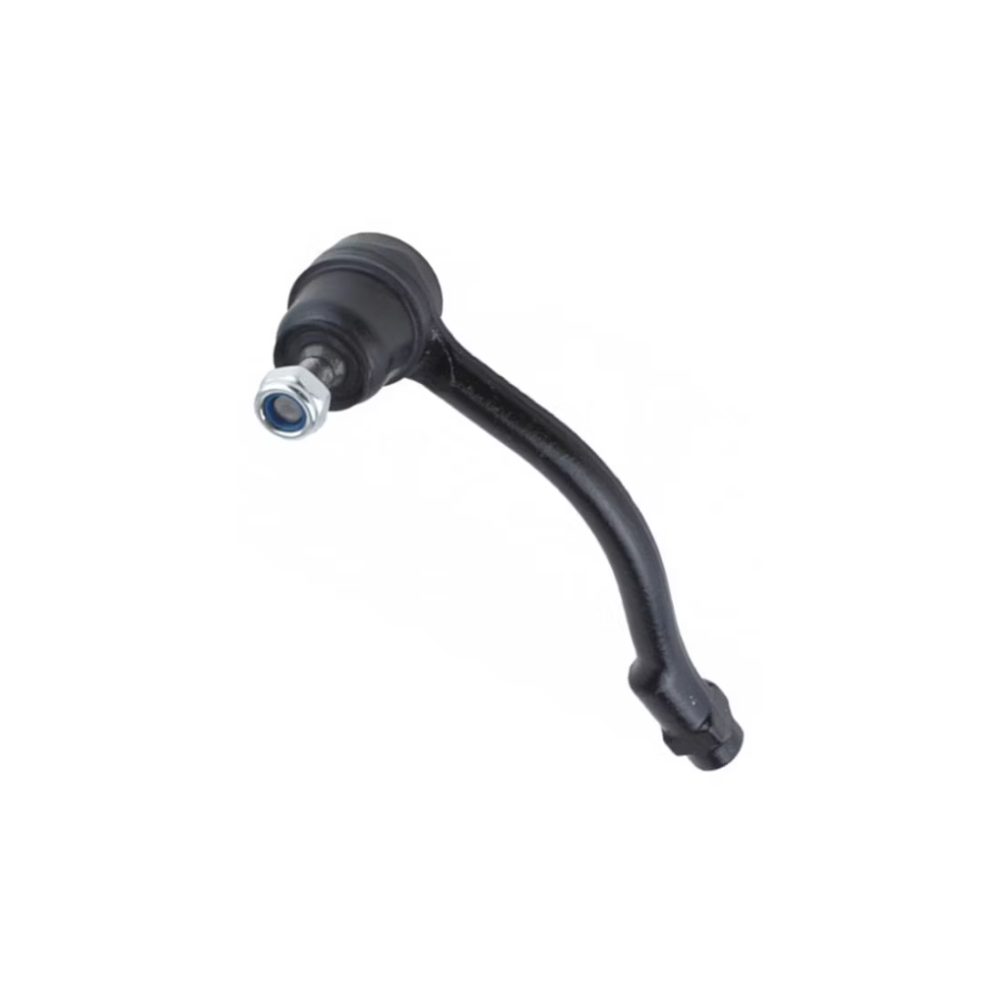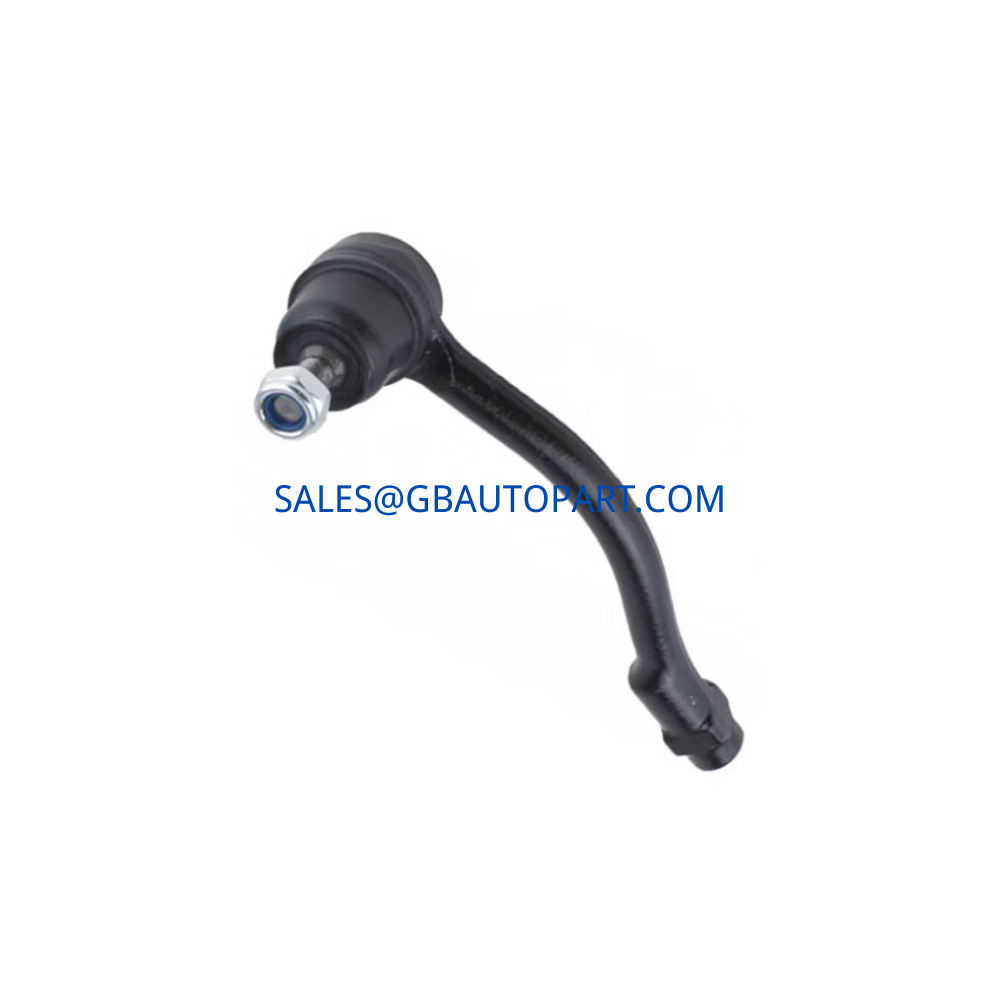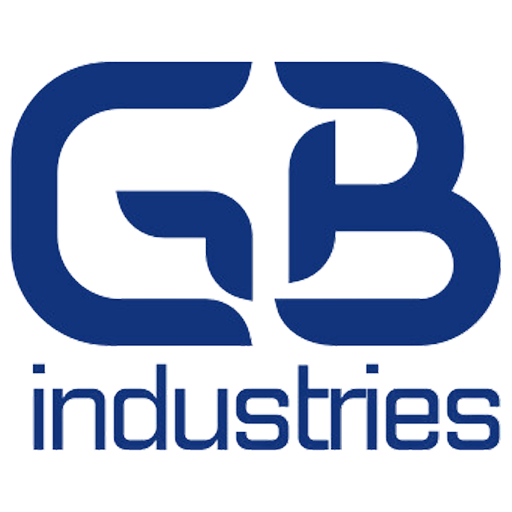
Understanding Left Outer Tie Rod End 56820-A7500: An Introduction
For vehicle owners and automotive service professionals, the left outer tie rod end, specifically identified by part number 56820-A7500, is an essential component of the steering and suspension system. This crucial part directly influences how your vehicle responds to steering inputs, enabling accurate directional control and maintaining overall stability. Understanding its precise function, recognizing symptoms of wear or failure, and knowing how to source a reliable replacement for the 56820-A7500 are critical for ensuring precise steering, vehicle safety, and the longevity of your tires.
The left outer tie rod end connects the steering linkage to the left front wheel’s steering knuckle. It’s a dynamic part, constantly moving and absorbing impacts from the road while simultaneously transmitting your steering commands. Over time, the internal components of any tie rod end can wear, leading to noticeable changes in steering feel and potentially compromising safety. The 56820-A7500 tie rod end is meticulously engineered for the specific vehicle applications it serves, ensuring proper fit and performance. This article will thoroughly explore the specifics of this vital component, highlighting its importance in the steering system and providing valuable insights for its proper function and timely maintenance.
Key Characteristics and Importance of Left Outer Tie Rod End 56820-A7500

The 56820-A7500 left outer tie rod end is a precisely engineered mechanical joint fundamental to your vehicle’s steering accuracy and front-end stability.
Core Function: Directing the Left Wheel
The primary role of the 56820-A7500 is to serve as the direct link between the steering mechanism and the left front wheel assembly.
- Translating Steering Motion: As you turn your steering wheel, the steering rack pushes or pulls the inner tie rod, which in turn moves the outer tie rod end. The 56820-A7500 then directly pushes or pulls the steering knuckle, causing the left front wheel to pivot and turn. This seamless transfer of motion ensures immediate and accurate response to driver input.
- Ball-and-Socket Design: Like most tie rod ends, the 56820-A7500 utilizes a ball-and-socket joint. This design allows for flexible, multi-directional movement, accommodating the vertical travel of the suspension (as the wheel goes over bumps) while still maintaining precise horizontal control for steering. This flexibility prevents binding and ensures smooth operation.
- Wheel Alignment Adjustability: The threaded shaft of the 56820-A7500 is crucial for setting your vehicle’s “toe” alignment. By adjusting the length of the tie rod assembly, technicians can precisely control how much the front wheels point inward or outward. Correct toe alignment is essential for straight-line stability, responsive steering, and preventing premature tire wear.
Design, Materials, and Durability
The construction of the 56820-A7500 is designed to withstand constant stress, environmental exposure, and the demands of everyday driving.
- High-Strength Construction: Tie rod ends are typically manufactured from robust materials such as forged steel. This high-strength construction ensures the 56820-A7500 can handle the significant forces exerted during steering, braking, and impacts from road irregularities without deforming or failing.
- Protective Dust Boot: A vital feature of the 56820-A7500 is its durable rubber or thermoplastic dust boot. This boot acts as a seal, protecting the internal ball-and-socket joint and its lubricating grease from contamination by dirt, water, road salt, and debris. A damaged or torn boot is a common precursor to tie rod end failure, as it allows contaminants to wear down the internal components and wash away lubrication.
- Internal Lubrication: The ball-and-socket joint within the 56820-A7500 is factory-lubricated with a specialized grease. Many modern designs are “sealed for life,” meaning they don’t require periodic re-greasing. The quality of this lubrication is critical for smooth, low-friction operation and extended component lifespan.
- Precision Manufacturing: The internal components are manufactured with high precision to ensure minimal play when new, which translates to a tight, responsive steering feel. Any excessive looseness or “play” can compromise steering accuracy.
Impact on Driving Experience and Safety
A fully functional 56820-A7500 left outer tie rod end is paramount for your vehicle’s overall driving experience and, more importantly, your safety.
- Responsive Steering: A healthy tie rod end provides a direct, immediate connection, ensuring your vehicle responds accurately and predictably to steering wheel movements. This direct feedback is essential for confident and safe driving, especially during evasive maneuvers.
- Vehicle Stability: Worn tie rod ends introduce unwanted play into the steering system, which can cause the vehicle to wander or feel “loose” at higher speeds. This instability reduces driver confidence and can be particularly hazardous on highways.
- Even Tire Wear: Because the tie rod end is crucial for maintaining proper wheel alignment, a worn 56820-A7500 can lead to incorrect toe settings. This often results in accelerated and uneven tire wear patterns (e.g., feathering or rapid wear on one edge), which shortens tire lifespan and increases operating costs.
- Critical Safety Component: In severe cases of wear or damage, a tie rod end can catastrophically fail, leading to a sudden loss of steering control for the affected wheel. This is an extremely dangerous situation that can result in serious accidents. Regular inspection and timely replacement are vital safety measures.
Applications in the Automotive Precision Industrial Model
The Left Outer Tie Rod End 56820-A7500 exemplifies the rigorous standards of the automotive precision industrial model. Its design, manufacturing, and integration highlight the meticulous engineering required for critical safety and performance components.
- Geometric and Kinematic Integration: The design of the 56820-A7500 is not arbitrary; it’s a precise fit within a complex suspension and steering geometry. Its specific length, angles of articulation, and mounting points are meticulously engineered to complement the vehicle’s unique suspension design. This ensures that the wheel moves correctly throughout its suspension travel, minimizing unwanted toe changes (bump steer) and maintaining optimal handling characteristics under various driving conditions, from smooth roads to rough terrain.
- Load Bearing and Fatigue Resistance: As a component that directly experiences forces from steering, braking, and road impacts, the 56820-A7500 is engineered for significant load bearing capacity and exceptional fatigue resistance. Its metallic components undergo specific material treatments, such as forging or heat treatment, to enhance their strength and durability against the cyclical stresses they encounter over hundreds of thousands of miles.
- Precision Manufacturing and Assembly: The internal ball-and-socket joint surfaces within the 56820-A7500 are machined to extremely tight tolerances. This precision minimizes initial play, ensuring a direct and responsive steering feel. The assembly process includes critical steps to correctly seal the protective dust boot, a primary defense against environmental contamination that would otherwise lead to premature wear of the internal components.
- Noise, Vibration, and Harshness (NVH) Control: While primarily a functional steering component, the design and material choices of the 56820-A7500 also contribute to the vehicle’s overall NVH characteristics. A well-designed tie rod end minimizes internal friction and absorbs minor road vibrations, preventing them from being transmitted into the steering wheel and cabin. Conversely, a worn tie rod end often manifests as clunking noises or excessive vibration, indicating its failure to meet NVH standards.
- Essential for Accurate Wheel Alignment: The threaded section of the 56820-A7500 is fundamental for the precise adjustment of the vehicle’s “toe” alignment. This adjustability allows service technicians to set the wheels to the exact specifications required for optimal straight-line stability, steering response, and uniform tire wear. The integrity of the tie rod end is paramount for holding these critical alignment settings over time.
The accurate and safe steering, stable handling, and overall reliability of the vehicle are fundamentally dependent on the consistent, long-term performance of the 56820-A7500 left outer tie rod end.
Delivering Value to Automotive Service Product Users
For automotive service professionals, a comprehensive understanding of the Left Outer Tie Rod End 56820-A7500 is indispensable for providing effective, safety-critical, and value-driven services to vehicle owners.
- Accurate Diagnosis of Steering & Suspension Issues: Knowledge of common symptoms associated with a worn or failing 56820-A7500 (e.g., loose or sloppy steering, excessive play in the steering wheel, clunking noises over bumps, uneven tire wear, a vehicle pulling to the left) allows technicians to quickly and accurately diagnose underlying steering problems. This precision avoids guesswork, reduces diagnostic time, and ensures the correct component is replaced, prioritizing customer safety.
- Ensuring Reliable Steering System Repairs: When tie rod end replacement is necessary, sourcing genuine or high-quality aftermarket 56820-A7500 units is paramount. Service providers who prioritize quality parts ensure the long-term reliability and precise operation of the steering system, significantly reducing costly comebacks and building client trust.
- Expert Installation and Critical Alignment: Replacing a tie rod end requires specific procedures, including safe vehicle lifting, careful removal of the old component, and precise installation of the new one. Most importantly, replacing any tie rod end always necessitates a professional wheel alignment immediately afterward. Workshops with skilled technicians who follow these best practices ensure optimal steering performance, prevent premature tire wear, and maintain vehicle stability.
- Educating Clients on Safety and Maintenance: Professionals can educate vehicle owners on the vital role of tie rod ends in steering control and the serious consequences of neglecting their maintenance. Explaining the dangers of loose steering and the importance of timely replacement (using components like the 56820-A7500) empowers clients to make informed decisions about their vehicle’s critical safety systems.
- Transparent Cost-Benefit Analysis: By clearly outlining the benefits of investing in a quality 56820-A7500 replacement (e.g., enhanced safety, improved steering precision, longer tire life) versus the risks of ignoring symptoms (e.g., loss of control, rapid tire wear, potential for catastrophic failure), service providers can justify the cost of the service, building trust and demonstrating a commitment to safety and vehicle integrity.
By mastering the knowledge and service related to the 56820-A7500 left outer tie rod end, automotive service providers can position themselves as trusted experts capable of handling critical steering and suspension repairs, ultimately delivering immense value and peace of mind to their customers.
Ensuring Authenticity and Correctness of Left Outer Tie Rod End 56820-A7500
When a replacement for the Left Outer Tie Rod End 56820-A7500 is needed, verifying its authenticity and correctness is absolutely paramount. As a direct link in your vehicle’s steering, using an incorrect or substandard tie rod end can severely compromise steering response, vehicle stability, and overall safety.
- Verify Part Number Meticulously: Always confirm that the part number is precisely 56820-A7500. Even slight variations in numbers can indicate a different fitment (e.g., thread size, taper angle, length, or internal design), making it incompatible with your vehicle’s steering knuckle and potentially unsafe or impossible to install correctly.
- Cross-Reference with VIN: Provide your vehicle’s full Vehicle Identification Number (VIN) to the parts supplier or dealership. The VIN ensures precise compatibility with your specific vehicle model, trim level, and model year, as tie rod specifications can vary even within the same vehicle line due to suspension differences or production changes.
- Purchase from Reputable Sources: Acquire 56820-A7500 tie rod ends only from authorized dealerships, well-established automotive parts distributors specializing in steering and suspension components, or highly trusted independent auto parts stores known for carrying quality brands like Moog, TRW, or Delphi. These sources are most likely to supply genuine OEM parts or reputable aftermarket components that meet or exceed original equipment specifications.
- Inspect Packaging and Markings: Authentic new 56820-A7500 tie rod ends will typically arrive in brand-specific packaging with clear labels, part numbers, and sometimes manufacturing dates or quality stamps. Visually inspect the part itself for robust construction, a complete and undamaged protective boot, proper threads, and any signs of damage or inferior casting. Be highly suspicious of plain, generic packaging, blurry printing on labels, or unusually low prices.
- Beware of “Too Good to Be True” Pricing: If the price for a 56820-A7500 tie rod end seems suspiciously low compared to market averages, exercise extreme caution. Counterfeit or low-quality tie rod ends may use inferior materials, have loose internal components, or feature a weak protective boot. These can lead to premature wear, rapid failure, and an immediate safety hazard, potentially causing a loss of steering control.
Diligent verification of the authenticity and correctness of the 56820-A7500 left outer tie rod end is an essential step in safeguarding your vehicle’s steering system and ensuring your long-term safety on the road.
Tips for Sourcing Left Outer Tie Rod End 56820-A7500
Sourcing the correct and high-quality Left Outer Tie Rod End 56820-A7500 is crucial for restoring accurate and safe steering. Here are the most reliable channels:
- Authorized Dealerships: This is the most secure avenue for obtaining a genuine OEM 56820-A7500. Dealerships have direct access to the manufacturer’s parts inventory, can accurately verify compatibility using your VIN, and provide a full manufacturer’s warranty. While potentially a more premium investment, it guarantees the highest quality, perfect fit, and original equipment performance designed specifically for your vehicle.
- Reputable Online Automotive Parts Retailers: Many large, well-established online platforms specialize in automotive parts, including steering and suspension components. When using these, ensure the vendor has a strong reputation, clear return policies, and positive customer reviews. Always use your full VIN to confirm that the 56820-A7500 (or a verified equivalent from a trusted aftermarket brand like Moog, TRW, or Delphi) is indeed the correct part for your specific vehicle.
- Well-Stocked Local Auto Parts Stores: Many brick-and-mortar auto parts stores carry a wide range of common replacement parts, including high-quality aftermarket equivalents to the 56820-A7500. Their knowledgeable staff can often assist with cross-referencing and immediate availability, which is particularly useful for urgent repairs. Inquire about the brand’s reputation, material quality, and warranty terms.
- Specialty Steering and Suspension Suppliers: Some suppliers specialize specifically in steering and suspension components. They might offer a wider selection of premium aftermarket brands for the 56820-A7500 that are known to meet or exceed OEM specifications. Research the brands they carry for quality assurance and proven durability in this critical vehicle area.
- Professional Auto Repair Shops: If your vehicle is already at a professional repair shop for diagnosis, they typically have established relationships with reliable parts suppliers. They can source the correct 56820-A7500 and handle the installation, including the absolutely necessary post-installation wheel alignment, ensuring the repair is done correctly and safely.
Always insist on a warranty for the 56820-A7500 and meticulously keep detailed records of your purchase, including part numbers, supplier information, and the date of purchase. This protects your investment and assists with any future claims or troubleshooting, providing you with peace of mind.
Conclusion
The Left Outer Tie Rod End 56820-A7500 is a seemingly small component with a colossal impact on your vehicle’s steering precision and overall safety. Its consistent integrity is fundamental to maintaining accurate steering response, vehicle stability, and even tire longevity. For vehicle owners and dedicated automotive service professionals, understanding the indispensable role of this part, recognizing the signs of its wear, and committing to timely replacement with genuine or high-quality parts are non-negotiable for driving confidence. By prioritizing a reliable 56820-A7500, you ensure your vehicle continues to handle precisely and safely on every journey.
FAQ
Q1: What are the most common symptoms of a worn or failing 56820-A7500 left outer tie rod end? A1: Common signs include a loose or sloppy feeling in the steering wheel, excessive play when turning the steering wheel, a clunking or popping noise from the front left suspension (especially over bumps or when turning), uneven or rapid tire wear on the front left tire, or the vehicle pulling to the left.
Q2: Is a wheel alignment necessary after replacing the 56820-A7500 tie rod end? A2: Yes, absolutely. Replacing the 56820-A7500 tie rod end directly affects your vehicle’s toe alignment on the front left wheel. A professional wheel alignment is mandatory immediately after replacement to ensure proper steering, prevent uneven tire wear, and maintain vehicle stability.
Q3: Can a worn 56820-A7500 tie rod end be repaired, or should it always be replaced? A3: Tie rod ends are designed as sealed, non-serviceable units. Once they develop excessive play, internal wear, or a torn protective boot, they must be replaced with a new 56820-A7500 or an equivalent quality part for safety. They cannot be reliably repaired.
Q4: How long does a 56820-A7500 tie rod end typically last? A4: The lifespan of a 56820-A7500 tie rod end varies significantly based on driving conditions, road quality, and vehicle mileage. They can last anywhere from 50,000 to 100,000 miles or more. Regular inspections during routine maintenance are essential to catch wear early.
Q5: What are the safety risks of driving with a severely worn 56820-A7500 tie rod end? A5: Driving with a severely worn 56820-A7500 tie rod end poses significant safety risks. In extreme cases, the ball joint can completely separate, leading to an immediate and total loss of steering control for the left front wheel, which can cause a serious accident.


